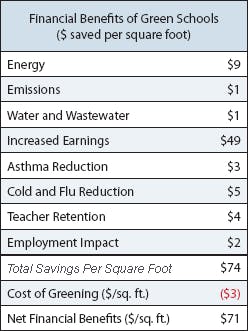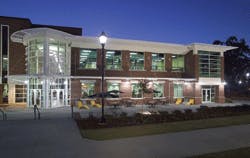Newsworthy
The Saint Index© Reveals Opposition to Land-Use Development
Results from the 2006 survey show Americans’ opposition to real estate development projects across 14 industries and five regions. Saint Consulting initiated the Saint Index to assess attitudes and activism toward real estate development. The telephone research occurred in September and early October, interviewing 1,000 respondents randomly selected across the United States. Some key findings:
- Twice as many Americans actively oppose development as support it.
- Seventy (70) percent support using tax dollars to keep land undeveloped and 38 percent support it “strongly.”
- Americans are less concerned about the environment (11 percent) than they are about protection of property values (36 percent) and preservation of community character (29 percent).
- Development has become a decisive political issue for local and regional elections; 75 percent of Americans think that the relationship between elected officials and developers makes the permitting process unfair.
- Seventy-one (71) percent of respondents support state laws that halt the use of eminent domain for private developments.
- There is significant public support for hospitals; 71 percent of Americans would support a new hospital in their community.
- The following development sectors encountered less opposition in 2006 than in 2005: apartments/condominiums, casinos, grocery stores, office buildings, and large shopping centers.
Patrick Fox, president at Saint Consulting, offers advice on how to overcome public opposition to a development project: “Developers, utilities, and institutions, among many other sectors facing mounting opposition and permitting delays, need to face the political demands of the public-approvals process, start outreach early, and mount aggressive campaigns to educate and organize the communities in which they propose to operate.”
Study Names Benefits of Green Schools
A number of organizations came together to sponsor Greening America’s Schools: Costs and Benefits, a study released in October 2006. Greg Kats, managing principal of Capital E (a Washington, D.C.-based clean energy and green building firm) authored the document. The 30 schools in the study were defined as “green” according to standards by the Washington, D.C.-based U.S. Green Building Council (USGBC); California’s Collaborative for High Performance Schools (CHPS); Massachusetts’ CHPS; and the Washington Sustainable School (WSS) Protocol for High Performance Facilities.
According to the study, green schools use an average of 33-percent less energy than conventionally designed schools. The 30 green schools evaluated also achieved an average water-use reduction of 32 percent. Researchers found that green schools cost less than 2-percent more than conventional schools (about $3 per square foot), but provide financial benefits that are 20 times as large (about $70 per square foot). The chart pictured shows the breakdown in savings.
Wal-Mart Experimental Stores Evaluate Progress
Wal-Mart Stores Inc., based in Bentonville, AR, has reviewed early results of various projects at its experimental stores after 1 year of operation. The company is applying the new learnings from its stores in Aurora, CO, and McKinney, TX, to other Wal-Mart stores and SAM’S CLUBs. These two stores operate with innovative green technologies designed to reduce operational and construction waste, use recycled and renewable materials, and conserve water and electricity.
The stores are being evaluated over a 3-year period by two government-sponsored laboratories. Successes so far include using LED lights in exterior signs and grocery, freezer, and jewelry cases, and a water-heating system using cooking and motor oil. Renewable power generation, such as the use of wind turbines, still needs more evaluation because of mechanical problems during the first year.
University Blends Old with New
Augusta State University in Augusta, GA, was recently awarded the University System of Georgia’s 2006 Real Estate & Public/Private Ventures Award for its new Jaguar Student Activities Center (JSAC). Funding for the $11.1 million building was made possible through a student center fee of $45 per student for 30 years. The 48,000 square feet of casual space was adjoined to the Reese Library, a modernist-era building constructed in 1976. Lord, Aeck & Sargent architects matched the library’s red brick and cream-colored precast concrete and used horizontal banding to create continuity. A new “atrium street” connects the library and the JSAC while providing an informal meeting and gathering space.
AIA Chicago Recognizes SOM’s Work on Virginia Beach Convention Center
Chicago-based Skidmore, Owings & Merrill LLP (SOM) recently received a Citation of Merit in the Distinguished Building Award category from the Chicago chapter of the American Institute of Architects (AIA) for its design of the new Virginia Beach Convention Center. The meeting facility uses water, wood, and natural light to capture its coastal surroundings. Guests walk across wooden boardwalks at the convention center’s entrance, where a glass curtainwall appears to float in pools of water both inside and outside the building. A 10-story observation deck also allows attendees to view the inviting skyline of the oceanfront. The first phase of the convention center features over 300,000 gross square feet of space. Scheduled for completion in 2007, the facility will offer more than 500,000 gross square feet of space.
EPA Recognizes Accor North America for Energy Efficiency
Carrollton, TX-based Accor North America, a hotel chain owner and operator, was recently named an ENERGY STAR® Leader by the Washington, D.C.-based U.S. Environmental Protection Agency (EPA). Accor North America improved energy efficiency across its Red Roof Inn, Studio 6, and Motel 6 properties to be recognized as part of the EPA’s ENERGY STAR Building Challenge, a program encouraging building owners and managers to reduce energy consumption by 10 percent or more.
Some of Accor North America’s environmentally friendly practices include:
- Installation of water-saving showerheads and faucet aerators.
- Using environmentally sensitive laundry and cleaning products.
- Employing technologically advanced heating and cooling systems to reduce consumption of power.
- Instituting a corporate office recycling program.
- Printing its 5 million directories on recycled paper using soy ink.
- Using fluorescent lighting, which consumes 75-percent less energy than conventional bulbs.
The metals industry recently published a declaration on recycling principles aimed at encouraging product policymakers, designers, and manufacturers to adopt life-cycle thinking when developing metal recycling policies. Currently, the content of recycled metals and alloys in products is used as a driver for increasing recycling rates and an indicator of environmental performance. According to a broad coalition of 18 metal industry associations, the approach is too simplistic and could encourage inefficiency in the production and use of recycled metals. Instead of specifying a minimum level of recycled material content in a product, the declaration states that a life-cycle approach considering the material flows at the end of the product life is preferable.
Survey Says Public Owners are Going Green
Tempe, AZ-based construction consulting firm PinnacleOne recently released results from its 2006 PinnacleOne Pulse of U.S. Public Construction survey. It reveals that 48 percent of public building owners in the United States have implemented construction projects with energy-efficient designs in the past year. Of those public building owners:
- Most (87 percent) were familiar with the Washington, D.C.-based U.S. Green Building Council’s LEED standards, and 70 percent used LEED standards in their designs.
- Nearly a quarter (24 percent) have used green design to renovate existing facilities, 34 percent have gone green in new facilities, and 42 percent have implemented energy-saving designs in both new and existing facilities.
- Forty-three (43) percent of owners prefer to outsource design and construction while maintaining ownership and management, while 45 percent have not utilized outsourcing at all. Only 10 percent prefer to completely outsource all aspects of a facility’s funding, construction, and management.
- Owners in the Northeast (74 percent) and Western (62 percent) regions were more likely to implement energy-efficient designs than owners in the rest of the country. Owners in the educational sector were twice as likely to use green designs as those in other industries.
Cool Roof Clearinghouse Now Available Online




